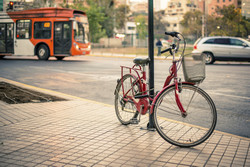Safe, active mobility in Europe: Örebro citizens can now share their experience
The up to 2 000 people surveyed in Örebro will join an existing database of a total of 14 000 testimonies from car drivers, cyclists, car poolers, pedestrians and public transport users. ‘From this database we will derive new scientific information and determine why it is that people use different transport modes, who uses active transports, who doesn’t, and how this influences people’s health,’ explains Luc Int Panis, Research Programme Coordinator Environment, Risk & Health at Vito and survey lead of the PASTA project. This information will help define how city planners can better promote physical activity as part of daily travelling patterns. The Örebro survey — just like those already conducted in London, Antwerp, Barcelona, Vienna, Rome and Zürich — was put together using a set of qualitative and quantitative indicators defined on the basis of extensive literature review and workshops. These indicators include modal share of walking and cycling, cycled or walked kilometres per year, current awareness and attitude towards active mobility, land use and topography (using quantitative analysis with GIS tools) but also the likes of existing transport infrastructure, policies for active mobility and political support. The project also conducted a series of workshops and interviews, the latter having been completed in March 2015. These investigated the link between promoting active mobility and health in towns and cities while exploring examples of cooperation among diverse sectors and city departments in charge of health, urban planning and transport. Sharing best practices The connection between transport and health is at the heart of the PASTA initiative, as underlined on the project website: ‘These days we Europeans are moving less, and not surprisingly it comes at a great cost to our health and the public purse. But building in those 20 minutes of recommended physical activity every day isn’t always easy. One way to change this would be to make physical activity part of our daily routine. This is where the PASTA project comes in’. To help European citizens reach this healthy threshold, PASTA will generate two core bodies of work. First, the team will create a HEAT for walking and cycling, which stands for ‘Health Economic Assessment Tool’. The latter will draw upon existing research, the World Health Organisation’s Health Impact Assessment (HIA) tool for walking and cycling, and new research generated by the project. Then, good practice examples from cities across Europe in the promotion of active mobility as part of transport infrastructure will be collected until the project end in 2017, before being compiled into a ‘PASTA compendium’, a handbook to support the implementation of measures for inward mobility, describing decision-making and planning processes, infrastructure and marketing campaigns, data evaluation and communication strategies. The handbook will be made available online for use by decision-makers, stakeholders and scholars. Örebro citizens interested in participating to the studies can register on the project website. For further information please visit: PASTA http://www.pastaproject.eu
Countries
Austria, Sweden



